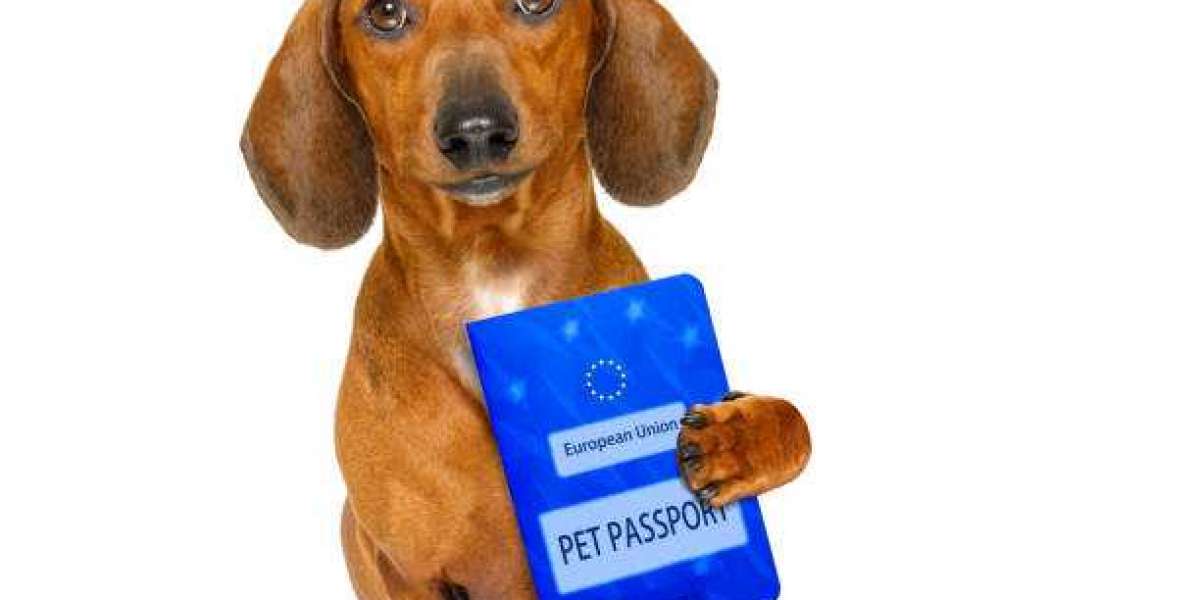Traveling with your pet across European borders can be a straightforward process with the right documentation. The EU pet passport is essential for ensuring your furry friend meets all the necessary health and travel requirements for cross-border movement within Europe. Here’s a step-by-step guide on how to get an EU pet passport in the UK and what you need to know to make your pet’s international travel smooth and stress-free.
What is an EU Pet Passport?
An EU pet passport is an official document that allows pets to travel between EU countries and other countries that are part of the Pet Travel Scheme (PETS). It contains important details about your pet's identity, vaccination status, and microchip information, which are crucial for meeting the import and export requirements of different countries.
Steps to Obtain an EU Pet Passport
Check Eligibility: Before applying for an EU pet passport, ensure your pet meets the eligibility criteria. Generally, pets must be microchipped, have up-to-date rabies vaccinations, and be at least 12 weeks old. Verify the specific requirements for the destination country, as some countries may have additional regulations.
Microchipping: Your pet must be microchipped with a chip that meets ISO 11784/11785 standards. This microchip provides a unique identification number that will be recorded in the EU pet passport. Ensure the microchip is implanted before the rabies vaccination.
Visit Your Vet: Schedule an appointment with a veterinarian who is authorized to issue EU pet passports. During this visit, the vet will check your pet's microchip, administer any required vaccinations, and complete the necessary health checks. The rabies vaccination must be administered at least 21 days before travel.
Obtain the Pet Passport: After ensuring that your pet is microchipped and has received the rabies vaccination, the vet will issue the EU pet passport. This document will include your pet’s details, microchip number, vaccination history, and other relevant health information.
Prepare for Travel: With the EU pet passport in hand, you’ll need to prepare for the journey. Depending on your destination, there may be additional requirements such as tapeworm treatments or health certificates. Check the specific entry regulations for the country you’re traveling to, and ensure all documents are in order.
Check Airline and Travel Regulations: If you’re flying, contact your airline to confirm their pet travel policies and ensure that your pet’s travel crate meets their specifications. Some airlines require additional documentation or have specific rules for transporting pets.
Additional Tips for Smooth Travel
Plan Ahead: Start the process of obtaining the EU pet passport well in advance of your planned travel date. This will give you ample time to address any potential issues and ensure that all requirements are met.
Keep Copies: Make copies of your pet’s EU pet passport and other important documents. Store these copies separately from the originals in case of loss or theft.
Consult with Professionals: If you have any doubts or need assistance, consult with pet travel specialists or your vet. They can provide guidance and help you navigate any additional requirements for your destination.
Conclusion
Obtaining an EU pet passport is a key step in ensuring your pet’s smooth transition across European borders. By following these steps and preparing in advance, you can make international travel with your pet a stress-free experience. Whether you're planning a vacation or a move, understanding how to get an EU pet passport in the UK and adhering to travel regulations will help ensure your furry companion enjoys the journey as much as you do.




